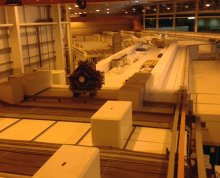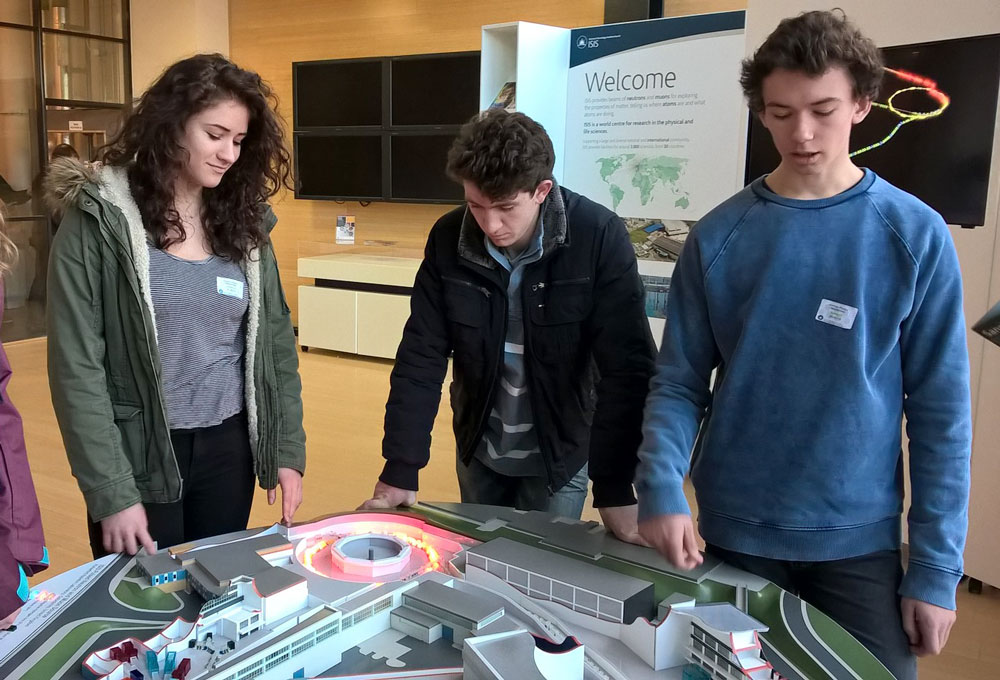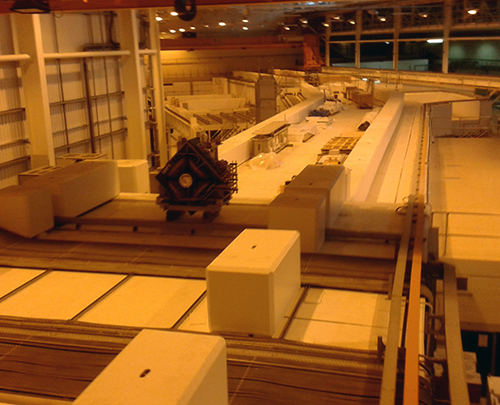
On Thursday 25 February, Sixth Form physicists attended the Particle Physics Masterclass, at the Rutherford Appleton Laboratory near Didcot. The laboratory is one of the premier particle accelerator experimentation sites in the whole of Europe, and was the ideal backdrop for the curriculum-enhancing class. The day consisted of a number of different lectures, from a range of physicists working in the facility. Lectures were based around a variety of topics, from the fundamentals of particle physics and the standard model including the different quark structures of matter, as well as an excellent description of the exchange particles called bosons. Many thanks to Head of Physics Mr Luke Cottrell, for organising the visit and providing the following report:
‘The first activity of the day was for the pupils to get hands on experience of looking at real data from the ATLAS experiment at the Large Hadron Collider in CERN. This was a computer session where data was analysed to determine what types of particles had been detected in each collision including, for one lucky group, the famed Higgs Boson. Following lunch there was another excellent lecture from Dr Kristian Harder, about the latest research and the inconsistencies in our understanding of the Standard Model, i.e. that it does not include gravity. This culminated with a rallying call from him to those assembled, as it will be the next generation of physicists that will most likely uncover this mystery. The final lecture of the day was on the applications of particle accelerators from the research that is conducted at the Rutherford Appleton Laboratory, the most important currently being the introduction of particle accelerators in medicine from X-ray machines, gamma knife surgery and onto the most recent development of proton beam therapy in the treatment of cancer.
 The highlight of the day, though, was the tour through ISIS – the proton accelerator that is used to produce high energy neutrons for experimentation and is the only such facility in Europe. Here, many different research scientists are working on many different projects involving neutron and muons so as to better our understanding of the universe, as well as many other applications. These included determining the structure of antibiotic resistant bacteria to aid in the search of future antibiotics, as well as the structure of nanomaterials that can then be used for the future generation of aircraft, amongst many others. Feedback from the pupils was all very positive as they enjoyed the opportunity to see ‘big science’ and realise that not all experiments fit on a laboratory table.’
The highlight of the day, though, was the tour through ISIS – the proton accelerator that is used to produce high energy neutrons for experimentation and is the only such facility in Europe. Here, many different research scientists are working on many different projects involving neutron and muons so as to better our understanding of the universe, as well as many other applications. These included determining the structure of antibiotic resistant bacteria to aid in the search of future antibiotics, as well as the structure of nanomaterials that can then be used for the future generation of aircraft, amongst many others. Feedback from the pupils was all very positive as they enjoyed the opportunity to see ‘big science’ and realise that not all experiments fit on a laboratory table.’





















